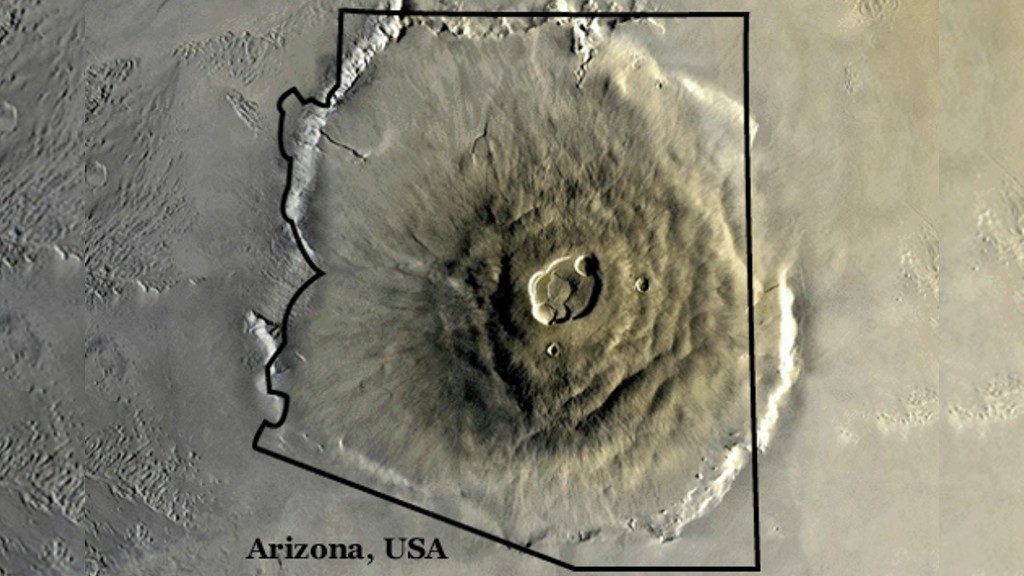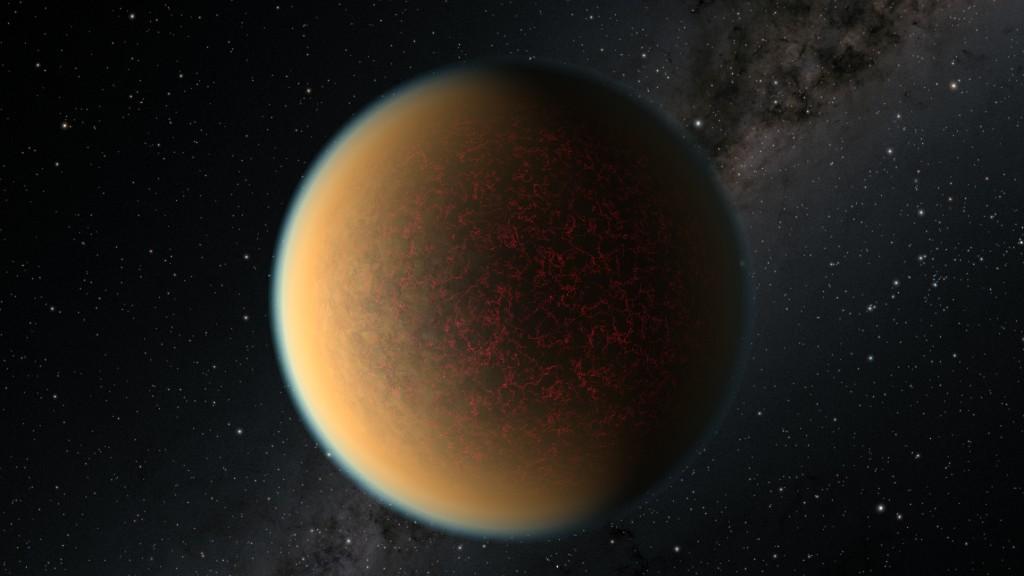Space volcanoes: Origins, variants and eruptions
Capable of both destruction and creation, space volcanoes are common on planets and moons throughout the solar system and beyond.

Volcanoes account for some of Earth's most interesting and violent geographical features, a force for destruction and creation. However, volcanic activity isn't limited to our planet and space volcanoes are often found on other planets and moons.
Within our solar system, the moon and Mars are rich with evidence of volcanoes and fiery volcanic activity, while other bodies possess volcanoes that spew ice from their frozen vistas.
Volcanoes on the moon
Now volcanically inert, the surface of the moon once hosted spectacular eruptions that created lava flows that extended as far as 750 miles (1,200 kilometers) from their source, according to San Diego State University.
A recent Chinese mission to the lunar surface — the Chang'e-5 lander — returned lava that seems to indicate Earth's primary natural satellite was volcanically active more recently than previously believed.
The sample collected from Oceanus Procellarum on the moon's near side, previously associated with recent volcanic activity, suggests volcanism as recently as two billion years ago, a full billion years later than previous estimates.
Volcanoes on Mars
Aside from Earth, the planet humanity has studied the geology of most intensely is Mars. This has led to the discovery that the Red Planet is host to even more volcanic features than our planet, according to Arizona State University.
Primary among these is Olympus Mons, the largest volcano in the entire solar system at twice the height of Mount Everest. It is surrounded by a plethora of other massive volcanoes.
In addition to this, Mars' other volcanoes includes Elysium, Syrtis Major, and a cluster of low-profile volcanic structures near the Hellas impact basin. This basin is the lowest point on Mars and the third- or fourth-largest known impact crater in the solar system.
Mars seems to be volcanically inactive, but when this happened is something astrogeologists are still attempting to figure out.
The volcanoes in the Tharsis — the location of Olympus Mons — show few asteroid impact craters, meaning they could be just a few million years old, which is fairly young in geological terms.
Mars was clearly very active in its youth, with explosive eruptions petering out as it aged. The planet has no active volcanoes, according to the National Air and Space Museum, and it appears most of the heat once stored in the planet's interior has been lost.
It is possible we are currently simply seeing Mars in a geologically quiet period and that volcanism could restart on the Red Planet.

Volcanoes on other planets
Many other planets in the solar system have been linked with volcanic activity with most of these having occurred when the solar system was young and violent.
The closest planet to Earth, Venus, has lava flows that cover up to 90 percent of its surface. Venus has up to 1,600 major volcanoes and could have as many as a million smaller counterparts to these.
What isn't certain is if the planet is still volcanically active. Though we have yet to see a volcano erupt on any other planet, Venus is shrouded by thick clouds of sulfuric acid, meaning long-distance observations are difficult. Visiting the planet with a probe is complicated by its intense pressures and temperatures.
Images captured by the MESSENGER mission have shown that Mercury's surface was shaped by volcanic activity. Lava flows on the closest planet to the sun have been dated to be between one and two billion years old. This means that volcanic activity continued well after Mercury formed around 4.5 billion years ago.
For active volcanoes, one has to look beyond the planets of the solar system to its moons.
Volcanoes on moons
According to an article by NASA, the most volcanic body in the solar system is Io, one of Jupiter's moons, this activity is caused by the tremendous gravitational influence of the gas giant deforming the tiny moon.
Not only does Io have volcanoes that spew blisteringly hot lava, but the Jovian moon also hosts cryovolcanoes. These ice volcanoes which occur on planets and moons located away from the sun erupt cold, liquid, or frozen gases like water, ammonia, or methane.
Io is punctuated with hundreds of volcanic vents, many of which blast jets of frozen gas hundreds of miles into Jupiter's atmosphere.
Cyrovolcanoes were first observed on one of Neptune's moons, Triton when the Voyager 2 craft caught a glimpse of five mile-high plumes of nitrogen gas during its 1989 flyby of the Neptunian system.
These eruptions are caused when solar radiation heats nitrogen below Triton's surface, vaporizing it, causing it to expand and eventually erupt from the Neptunian moon's icy surface. Eventually, this material condenses and falls back to the surface of Triton, giving it a smooth snow-covered surface.
In 2005, the Cassini spacecraft observed ice jets released from the southern polar region of Saturn's moon Enceladus. Cassini actually flew through one of these eruptions discovering it to be mostly comprised of water vapor with some nitrogen, methane, and carbon dioxide.

Volcanoes beyond the solar system
Of course, there is no reason to believe that volcanoes are restricted to our solar system. The more astronomers explore planets around other stars, the more evidence they find of violent volcanic activity on these planets.
In 2017, researchers from Cornell suggested that searching for volcanic sources on exoplanets could improve our chances of finding life elsewhere in our galaxy.
The team suggested that rather than attempting to look for life beneath the frozen shells of exoplanets, volcanic hydrogen and atmospheric warming could indicate the possibility of surface life.
This could, in turn, increase the probability of spotting telltale signs of life distributed in the atmospheres of these worlds.
The solar system's largest volcano
Standing at almost 16 miles (26 kilometer) high with a 374-mile (602-kilometer) diameter as wide as the state of Arizona, Olympus Mons isn't just Mars' largest mountain, it is the solar system's biggest too.
Approximately 100 times larger than Earth's largest volcano — Mauna Loa — Olympus Mons is an extinct volcano that sits in a field of other large volcanoes called the Tharsis region of Mars.
Like the Hawaiian volcanoes, this martian example is a shield volcano, meaning that it sits low and broad with swallow inclines. The reason for the tremendous size of Olympus Mons is theorized to be a result of how the plates of Mars and Earth differ.
On Earth, while hot spots remain stationary, crustal plates flow over them meaning new volcanoes form and older ones become extinct. On Mars, however, the hotspot remains stationary, but so too does the plate. This leads to lava piling up into one large volcano rather than having its volume distributed across many.
Additional resources
The 20-year Cassini mission spotted ice volcanoes on Cassini. You can read about its other significant discoveries at NASA's Cassini web page. Additionally, to learn more about volcanoes on other planets, read this article from the American Museum of Natural History (AMNH).
Bibliography
"Volcanoes" Mars Education at Arizona State University (2022).
"Active Volcanoes of Our Solar System". Hobart M. King, PhD, RPG. Geology.com (2022).
"Young Volcanoes on the Moon". NASA Science (2014).
"Exploring the planets". The National Air and Space Museum (2022).
"Olympus Mons". NASA Mars Exploration Program. Mars Atlas.
"China’s Moon trip reveals surprisingly recent volcanic activity", O'Callaghan, J. Nature (2021).
Join our Space Forums to keep talking space on the latest missions, night sky and more! And if you have a news tip, correction or comment, let us know at: community@space.com.
Get the Space.com Newsletter
Breaking space news, the latest updates on rocket launches, skywatching events and more!

Robert Lea is a science journalist in the U.K. whose articles have been published in Physics World, New Scientist, Astronomy Magazine, All About Space, Newsweek and ZME Science. He also writes about science communication for Elsevier and the European Journal of Physics. Rob holds a bachelor of science degree in physics and astronomy from the U.K.’s Open University. Follow him on Twitter @sciencef1rst.










